By Nitika Agarwal
Photography: Courtesy
MDC & Shrujan Trust
Read Time: 3 Mins
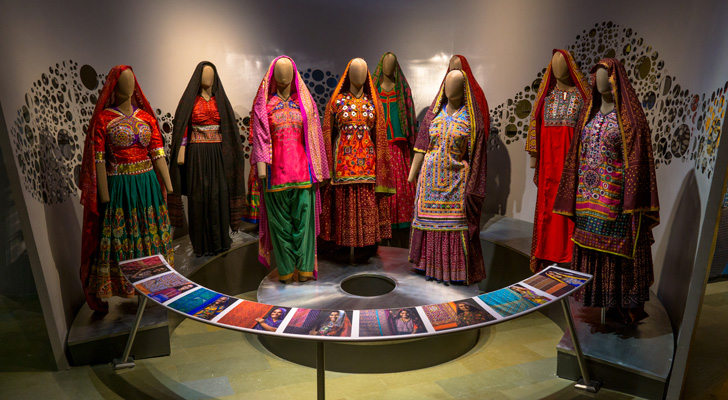 |
| . |
Matrika Design
Collaborative chisel out Bhuj’s textile gallery with subtle contextual
references that bring alive the embroidery traditions and the desert landscape
of the region...
A small village
in Kutch, nearly 18km from Bhuj has recently opened a museum gallery that’s part
of a 9 acre campus known as the Living and Learning Design Centre (LLDC). While
its now complete gallery caters to permanent and temporary displays of the
age-old tradition of Kutchi embroidery; the two other galleries nearing
completion by early 2017 will serve as an archive centre to document
collections and commissioned works; and as a craft studio that will operate as
a common platform for craftspeople and designers to establish a dialogue
between the past and present.
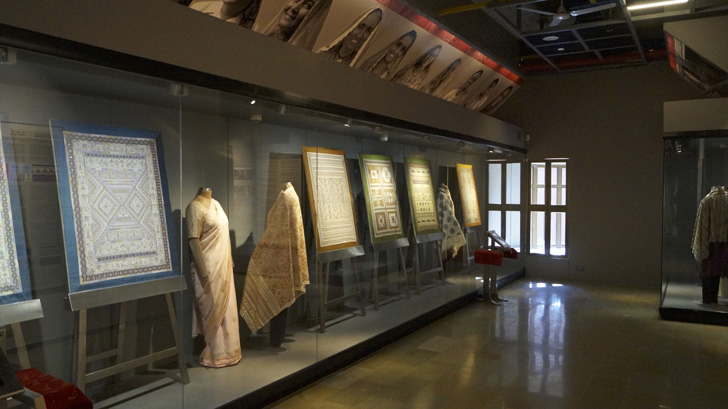 |
| . |
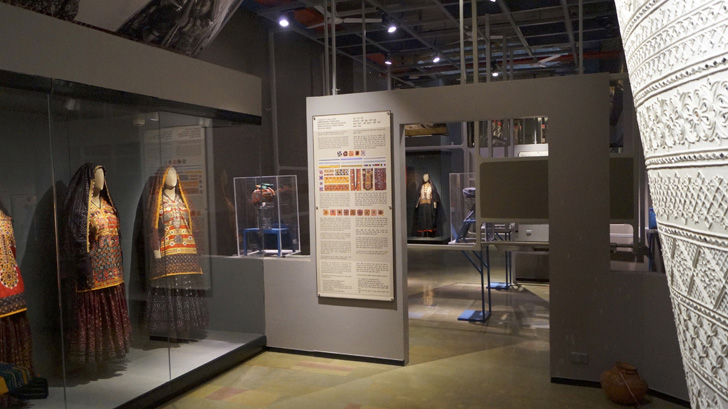 |
| . |
Mumbai-based
design studio, Matrika Design Collaborative helmed by Ar. Abhishek Ray has made
this vision possible in two years with meticulous research on ten prominent communities
of Kutch that practice varied styles of embroidery. The layout and design of
the gallery borrows immensely from local socio-cultural attributes, where
associated information and samples of material
culture bring about a cohesive narrative anointing each community.
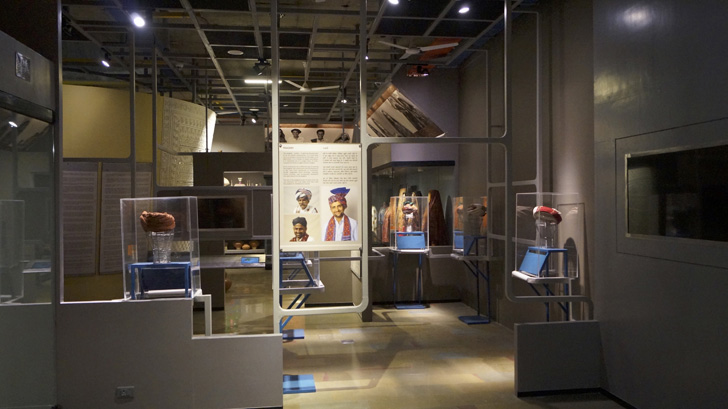 |
| . |
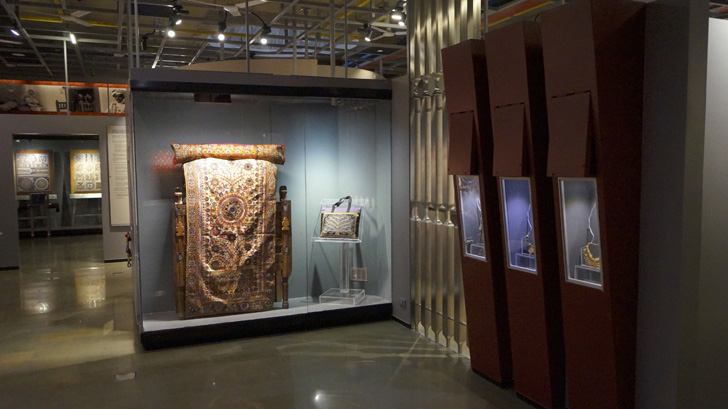 |
| . |
Using a
minimalist approach, a controlled micro-climate is maintained in display
enclosures; light wells create multiple foci for the
exhibits; three-tier information systems:
visual panels showcasing portraits of community artisans above display
cabinets – the collections per se – and information delivered through graphic
panels, interactive tablets and other media complete the desired exhibition
design.
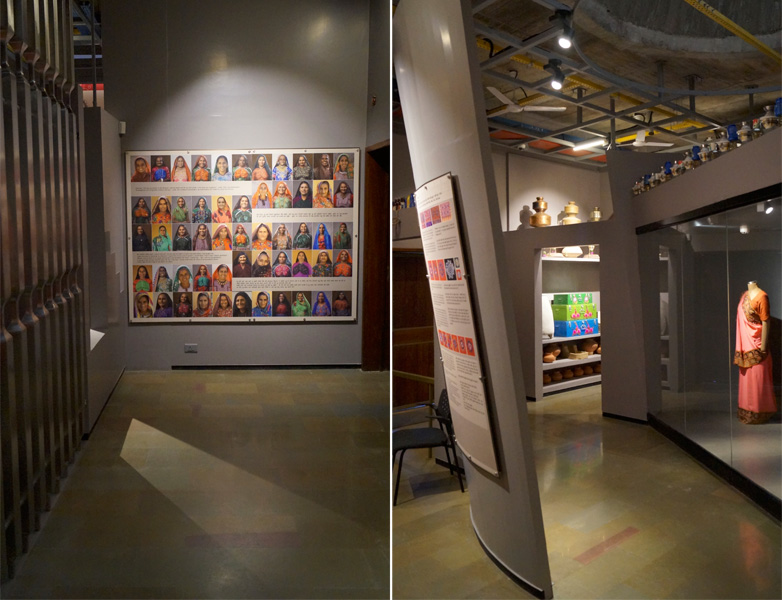 |
| . |
 |
| . |
The interior envelope
is downplayed by establishing an unprocessed, concrete finish with a palette of
muted colours to enhance the exhibits and allow one to observe the nuances of
style, texture, colour and so on. Mild steel and stainless steel constitute primary
structural materials to provide for movable extensions, lighting and electrical
services. Slanting walls and curvatures add to spatial elements as regional
artefacts endorse contextual flavour.
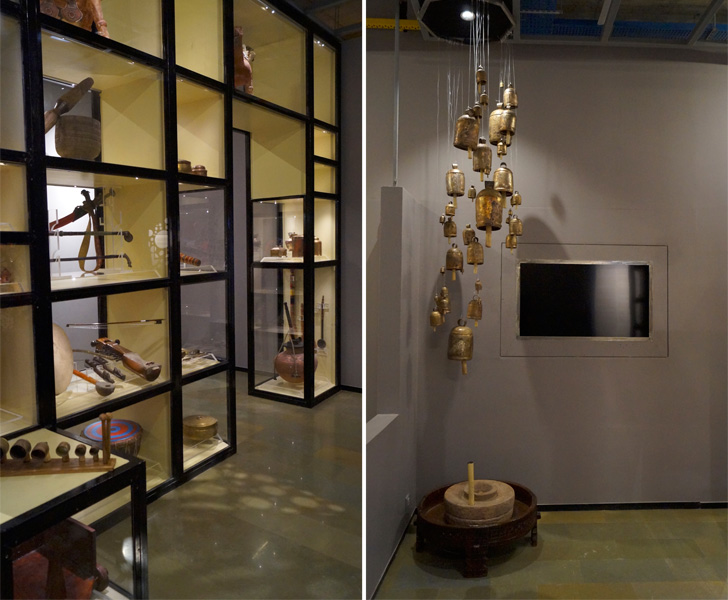 |
| . |
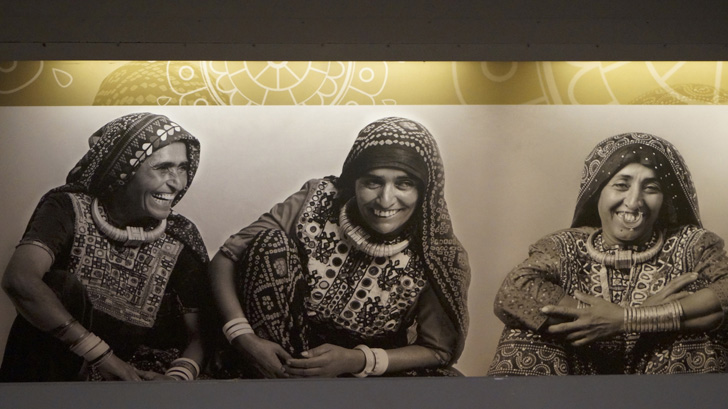 |
| . |
With material
conservation and expression being critical aspects of museum design, wood and
other organic materials are deliberately avoided and care is taken to circumvent
excessive/harsh light, dust, and insect and rodent ingress. To ensure optimum
micro climate, an extension of water cooled system with filters is devised to
maintain controlled air circulation, humidity level and temperature in the main
‘panel enclosures’ that house large embroidered collections. Highest grade of
LED lighting is employed to ensure high quality display, despite preservation measures
in place.
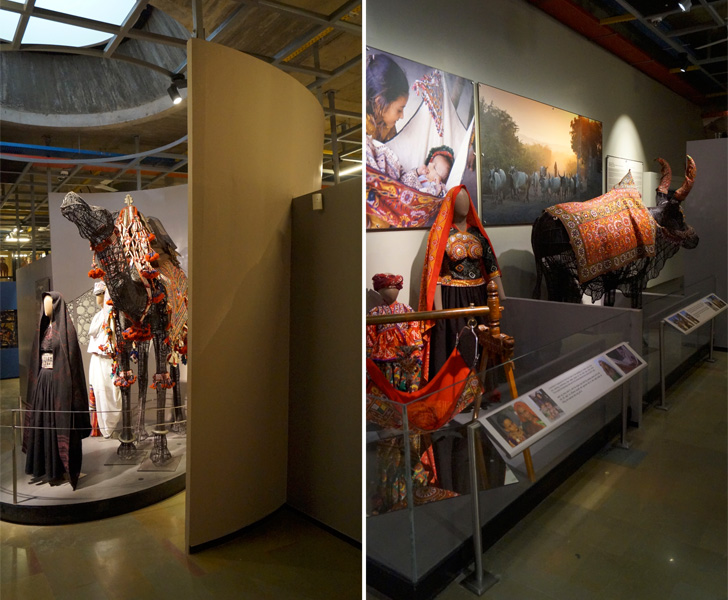 |
| . |
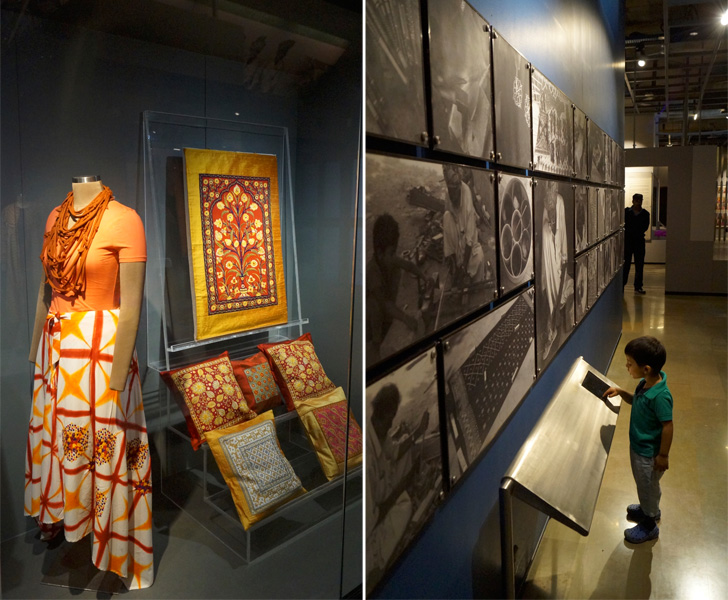 |
| . |
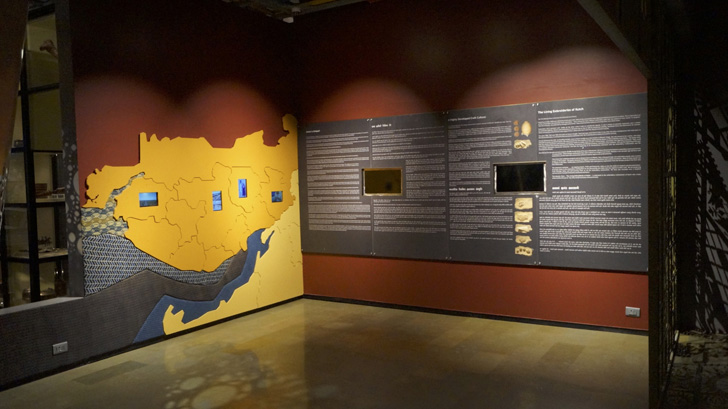 |
| . |
The exhibits
evoke a sense of continuity and distinction of the various communities of Kutch
that practice more than one style of embroidery each, taking visitors along a
stimulating journey of history reflected in its craft. Screens and partition
walls express a more contemporary adaption of different embroidered patterns;
overall demonstrating the harmony of old and new, past and present.













You have a good point here!I totally agree with what you have said!!Thanks for sharing your views...hope more people will read this article!!!
ReplyDelete